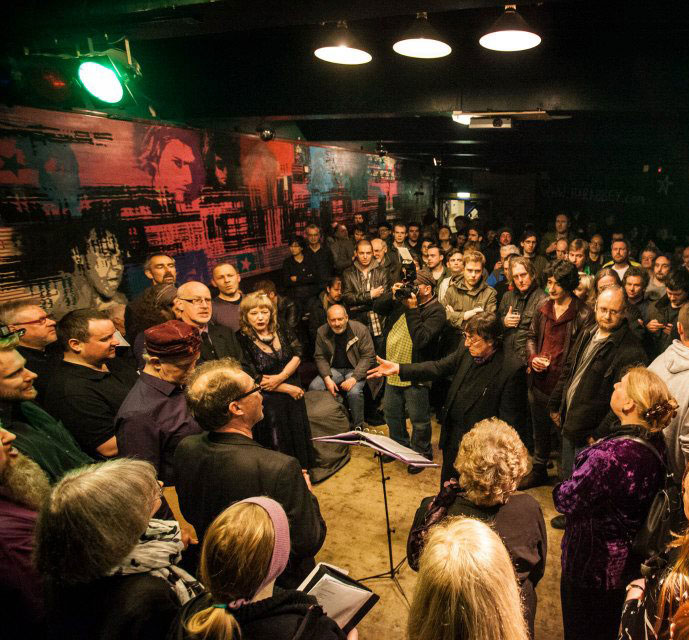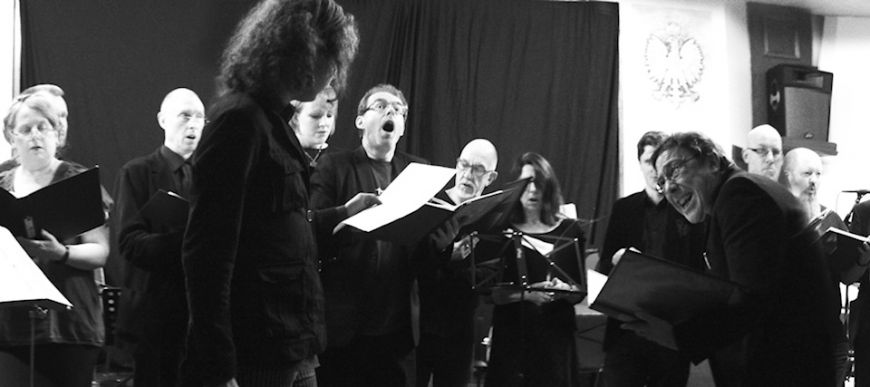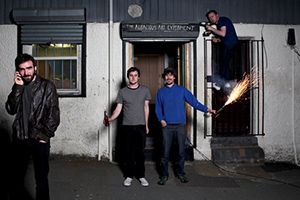
You have probably heard many choirs in your time – maybe you’ve even sung in a few – but I’m certain that very few people have ever sung in an ‘antichoir’ before. That’s how Juxtavoices, a 30-strong singing group based in Sheffield, style themselves. We caught up with the group’s founder, Martin Archer, to ask how you get a choir to rehearse when you’re making up the songs as you go along.
Tell us about how Juxtavoices came into being. Who came up with the term ‘antichoir’ and what does it mean?
I started the group around six years ago, initially to be the vocal section on the first Orchestra Of The Upper Atmosphere CD. We really only needed around ten people, but ended up with a large group pretty quickly thanks to word of mouth. I’ve always been fascinated with the possibility of what happens when you get a large number of voices together working in a common direction.
I think Geraldine Monk came up with the ‘antichoir’ tag. It’s not a negative thing. It just makes it very clear that there are some things which straight music choirs do which we don’t ever do.

Listening to your stuff reminds me a little of John Cage’s infamous piece, ‘4’33”’. What kinds of musicians influence Juxtavoices?
Sure, Cage and that generation of 1950s / 60s avant garde is an important element of where we’re coming from. Cage, Ligeti, Stockhausen all have large-scale vocal music that I like very much. From Cage especially, I take the idea that you can put different and quite separate musical parts side by side and simply leave it to chance how they interrelate and make the structure.
I also like the idea that a composer provides only an outline, and the performers create all the detail out of their own imaginations. I guess that comes out of jazz and improvised music too as much as the contemporary classical world. The other important influence behind the group is that of performance poetry generally, where words might be taken off into a more abstract realm.
Where do the ‘lyrics’ come from?
A variety of sources: spam emails, classic writers such as Gertrude Stein or Samuel Beckett, some stuff written from within the group (co-director Alan Halsey and Geraldine Monk are both published poets). We have one piece, ‘Ascent’, where I ask each singer to bring their own text. And we use some graphic scores to inspire wordless singing. You can’t just say to singers, “Just sing”, as you’d say to an instrumentalist, “Just play”. They need a bit more to go on.
How do you go about rehearsing one of your songs? It’s hard to imagine you reading off sheet music.
We don’t use conventional scores, but each of our pieces is rehearsed and is identifiably the same each time we sing it, even if the detail changes. Most of our scores are lists of instructions – ‘do this, then, when x happens, do this’. A lot of it relies on the performers remembering what we decided to do.
What kind of reaction does your music get when you perform in public?
Because it’s vocal, we can get away with stuff that most people would hate if it was instrumental. A typical reaction is someone coming up afterwards and saying something like, ‘What the heck were you doing? How did you know what to do?’ In fact, quite a lot of people have joined the group on the back of hearing us unexpectedly and wanting to do it themselves.
What are the plans for the future of Juxtavoices?
We keep getting offered as many gigs as we fix up for ourselves, so I guess we’ll just keep doing what we do now. We have a new CD/DVD out in October, and enough material for another one next year. I think six years in there’s still a lot of possibilities to explore. And we’re always after new members as the old ones wear out.
Juxtavoices’ next gig will be 2-5pm on Saturday 12 September at St Mary’s Parish Church in Wirksworth as part of Wirksworth Festival, near Matlock.
For more info about the group, head to their page at Discus Music.
Words: Phil Bayles.



